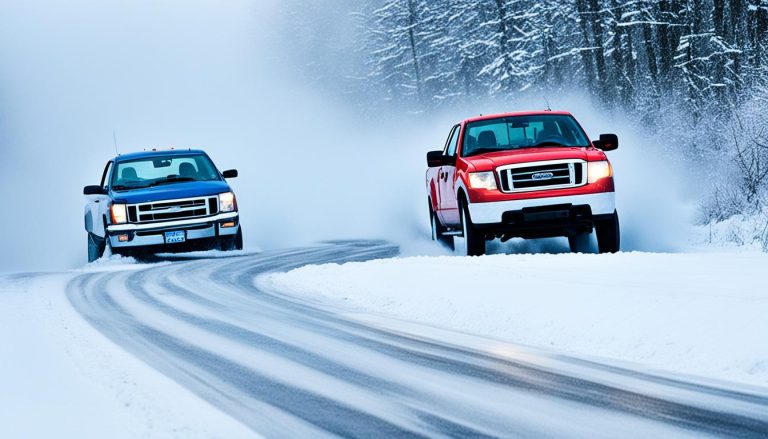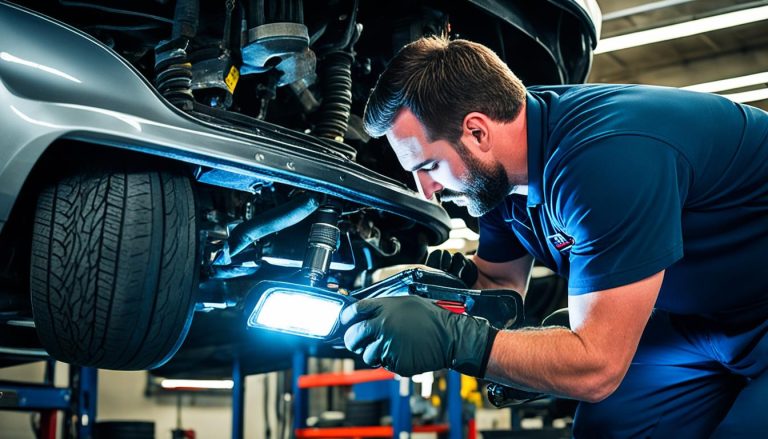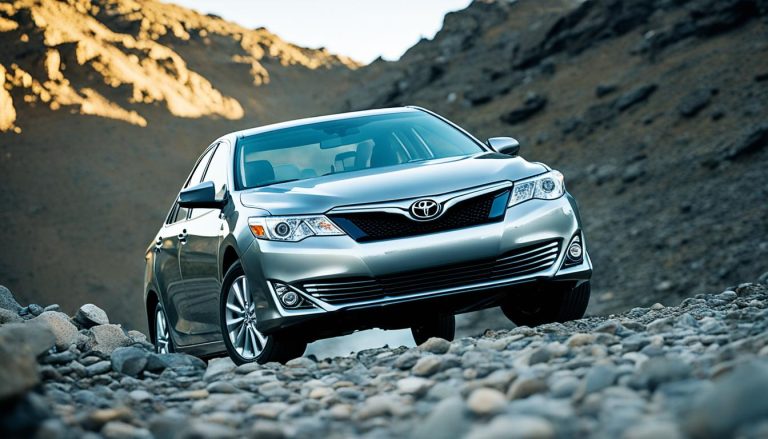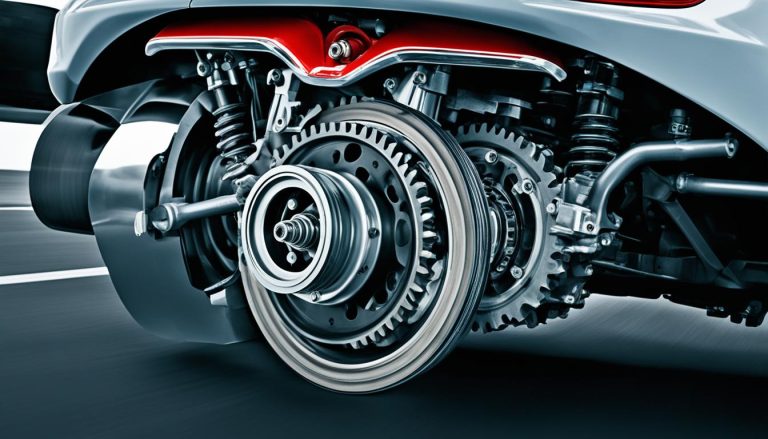1956 Thunderbird Rear Axle Limited Slip Guide
If you have a passion for classic cars, specifically the iconic 1956 Thunderbird, enhancing its performance is likely one of your top priorities. Upgrading the rear axle to a Thunderbird limited slip axle is a transformative mod that can imbue your ride with better control and a more exhilarating driving experience. This guide is your roadmap to understanding the benefits and process of a rear axle upgrade for your 1956 Thunderbird, focusing on the installation of a limited slip differential. Buckle up as we delve into the world of drivetrain enhancements that ensure you get the most out of every turn and straightaway.
Key Takeaways
- Discover how a limited slip differential can significantly improve your 1956 Thunderbird’s traction and handling.
- Identify key specifications like axle width and spline count to ensure proper fitment of your new component.
- Learn the steps for a successful rear axle upgrade and the importance of a break-in period for longevity.
- Gain insights into differentials interchangeability across Ford models and the aftermarket solutions available.
- Maintain your limited slip differential with expert tips to keep your classic Thunderbird running smoothly.
Understanding the Limited Slip Differential in Your 1956 Thunderbird
The 1956 Thunderbird remains a symbol of classic automotive excellence, and enhancing its rear axle performance with a limited slip differential can transform your driving experience. As you cruise across diverse terrains, the ability to maintain control and performance on any road is paramount. Let’s delve into the mechanics and benefits of incorporating a limited slip differential into your Thunderbird.
Defining a Limited Slip Differential
A limited slip differential (LSD) serves a critical function in your vehicle’s drivetrain, effectively balancing power distribution between the wheels during acceleration and cornering. Unlike a standard differential, an LSD limits excessive wheel spin by redirecting torque to the wheel with better grip, offering enhanced traction when it’s most needed.
For owners of a classic car like the 1956 Thunderbird, upgrading to an LSD can be a game-changer, particularly when faced with slippery or loose road surfaces that challenge conventional differentials. It is a smart investment to ensure that each drive in your vintage treasure is as enjoyable as it is reliable.
Benefits of Installing a Limited Slip Differential
The advantages of a limited slip differential in a classic car are numerous, and for your 1956 Thunderbird, they equate to a significantly improved driving dynamic:
- Enhanced Traction: The LSD adjusts power delivery allowing for superior grip in varying road conditions.
- Better Handling: It provides stability and better response during cornering, ensuring a smoother ride.
- Improved Acceleration: Experience quicker and more consistent acceleration without the hindrance of wheel slip.
- Safety: Gain peace of mind knowing your car can better handle unexpected road situations.
By fitting an LSD to your 1956 Thunderbird, you’re equipping your vehicle to face a broader array of driving environments with confidence. Not only does an LSD elevate the car’s performance, but it also preserves the integrity and spirit of your Thunderbird, making it fit for modern roads while respecting its historical significance.
To understand the impact of an LSD on your car’s performance, consider the following comparison between a standard differential and a limited slip differential:
| Feature | Standard Differential | Limited Slip Differential |
|---|---|---|
| Traction | Varies with condition | Consistently higher |
| Handling | Can be unpredictable | Enhanced and more reliable |
| Performance on Slippery Roads | Poor wheel spin control | Improved power distribution |
| Vehicle Longevity | Could be compromised | Prolonged with better stability |
Transitioning your 1956 Thunderbird rear axle performance from good to great with an LSD means your classic car stays timeless in experience yet becomes contemporary in capability, ensuring exceptional control and performance on any road.
Identifying Your 1956 Thunderbird’s Rear Axle for Limited Slip Conversion
Embarking on a rear axle conversion for your 1956 Thunderbird signifies engaging in a project that can remarkably enhance your vehicle’s performance. However, it all begins with identifying the unique characteristics of your vehicle’s rear axle. Let’s delve into how you can locate the crucial identifiers and what they mean for your conversion process.
Locating the Axle Tag and Deciphering Its Codes
Finding the axle tag, which is usually attached to the rear-end housing, is your first step. This tag contains a wealth of information that’s encoded and waiting for you to decipher. These rear axle tag codes include the gear ratio, axle size, and often a manufacturing date. Each aspect is an essential factor in selecting the right limited-slip differential (LSD) compatible with your classic ’56 Thunderbird.
Understanding Axle Widths and Spline Counts
The next pivotal detail lies in understanding the axle widths and spline counts. These measurements are not just numbers; they directly affect which LSD unit you can install. Here’s an interesting fact: Thunderbirds from this era generally feature 28 or 31 splines. The number of splines – those grooves on the axle that interact with the differential – correlates with the strength and compatibility of the differential unit.
Wondering how these technical details translate into real-world applications? Here’s a comparative visual to guide you through the various axle specifications:
| Vehicle Model | Axle Width | Spline Count |
|---|---|---|
| 1956 Thunderbird | Varies | 28/31 |
| Ford Explorer | Wider | 31 |
| Ford Ranger | Narrower | 28 |
This table will help you determine the specifics once you’ve extracted the details from your Thunderbird’s rear axle tag. With the correct numbers at your disposal, you’re well on your way to selecting a suitable LSD for your rear axle conversion. The result? A more robust, responsive, and enjoyable driving experience, akin to rekindling the classic allure of your 1956 Thunderbird.
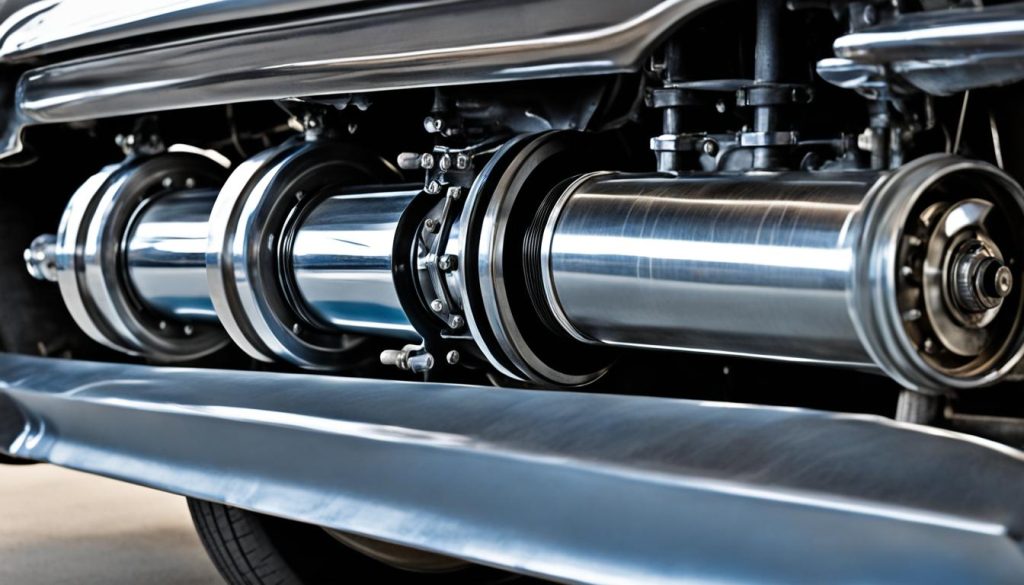
Step by Step: Upgrading Your 1956 Thunderbird with a Limited Slip Differential
Embarking on a DIY rear axle improvement for your classic car can be a thrilling venture. When installing a limited slip differential in your 1956 Thunderbird, following this step by step LSD upgrade guide ensures a seamless and efficient process. Not only will this increase your vehicle’s performance, but it will also mark a significant milestone in your 1956 Thunderbird drivetrain enhancement endeavors.
- Gather Necessary Tools and Equipment
- Socket set
- Wrenches
- Jack and jack stands
- Torque wrench
- Secure the vehicle on a level surface and lift it using a jack.
- Remove the wheels for accessibility to the rear axle.
- Detach the differential cover and drain the old fluid.
- Unbolt the axles and slide them out carefully.
- Verify the axle specifications against the new LSD requirements.
- Ensure the spline count and gear ratio are compatible.
- After obtaining the LSD, transfer the ring gear from the old differential.
- Ensure proper torque is applied to the ring gear bolts.
- Install the LSD unit into the axle housing and set the preload appropriately.
- Seal the differential cover and fill with fresh lubricant, including proper additive.
- Re-attach wheels and lower the vehicle to the ground.
- Conduct a break-in by driving under mild conditions for a set mileage.
Regular maintenance checks post-install are paramount to the longevity and efficiency of your new LSD. Vigilance for leaks, proper lubrication, and monitoring preload will contribute greatly to the ongoing performance of your 1956 Thunderbird’s upgraded drivetrain.
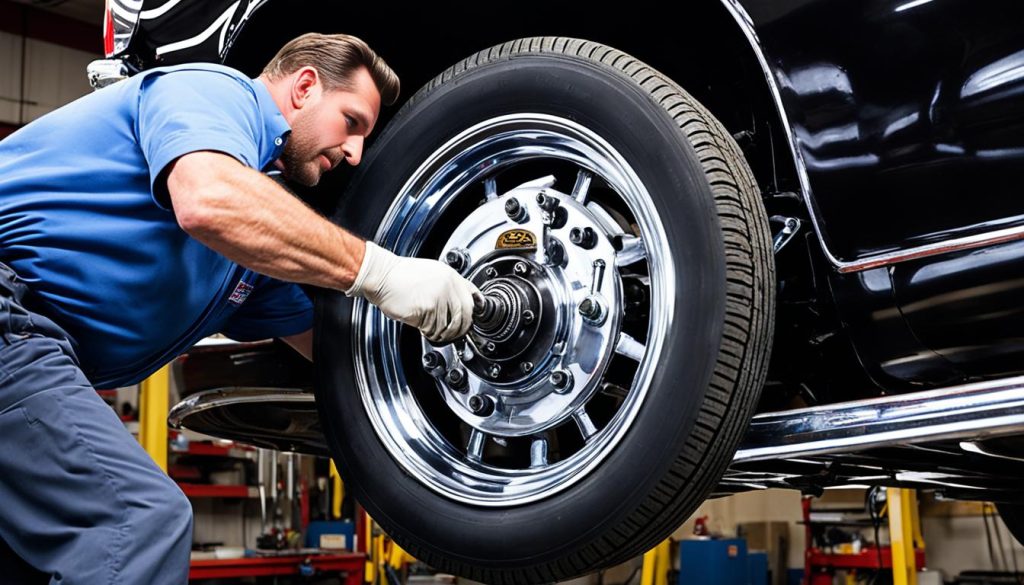
| Step | Description | Tools Required |
|---|---|---|
| 1. Preliminary Setup | Lifting vehicle, removing wheels | Jack, jack stands, socket set |
| 2. Axle Removal | Removing differential cover, draining fluid, axle extraction | Socket set, wrenches |
| 3. LSD Selection | Compatible LSD identification | Specification charts, measurement tools |
| 4. Gear Setup | Ring gear transfer, applying torque | Torque wrench |
| 5. Installation and Break-In | Installing new LSD, sealing cover, vehicle testing | Socket set, torque wrench |
Remember: A well-executed installation of a limited slip differential can transform the handling and performance of your 1956 Thunderbird, setting you up for many more miles of driving pleasure.
Exploring Differential Interchangeability with Other Ford Models and Choosing the Correct Limited Slip Differential: Aftermarket Options
When you set out to do a rear axle 1956 Thunderbird limited slip upgrade, it’s wise to consider the parts interchangeability among different Ford models. This approach not only broadens your horizons for potential parts but could also make the upgrade more cost-effective. Before diving into the interchange universe, remember to verify that your findings are indeed a match for your Thunderbird. Ensuring proper LSD fitment for your 1956 Thunderbird hinges on matching up the axle widths and spline counts with meticulous precision. It’s a bit like finding a key to a lock—everything must align for the magic of enhanced performance to happen.
Exploring Differential Interchangeability with Other Ford Models
By considering Thunderbird limited slip axle interchangeability, you have the opportunity to harness the robust capabilities from a range of Ford automobiles. An 8.8″ differential from models, such as the Mustang or the Falcon, could potentially be adapted to fit your Thunderbird’s rear axle specifications. However, compatibility is paramount, and that’s where expert advice or extensive research comes into play. Scrutinizing axle widths and spline counts is a non-negotiable step in ensuring that the differentials align seamlessly.
Choosing the Correct Limited Slip Differential: Aftermarket Options
When you look toward aftermarket limited slip differential options, you enter a realm of high-grade components designed to elevate your driving experience. Renowned brands like Yukon Gear & Axle and Ford Motorsports are known for their quality LSD units, which tailor to varying requirements regarding spline count and gear ratio. Within these selections, identify what fits your technical specifications and personal preferences for performance enhancements. It might also be advantageous to seek guidance from seasoned specialists who can steer you toward the aftermarket solution that will fulfill your vision for a superior 1956 Thunderbird ride.
FAQ
What is a limited slip differential and why should I consider it for my 1956 Thunderbird?
A limited slip differential (LSD) is a type of automotive differential that allows for smoother distribution of power to the wheels, limiting the amount of wheel spin under low traction conditions. For your 1956 Thunderbird, this upgrade means enhanced traction, better handling, and overall improved performance on various road conditions.
How do I identify my 1956 Thunderbird’s rear axle specifications for an LSD upgrade?
To identify your rear axle specifications, you’ll need to locate the axle tag attached to the rear-end housing of your Thunderbird. Decoding the axle tag will provide essential information such as the gear ratio, axle size, and manufacturing date, all necessary for selecting a compatible limited slip differential for your vehicle.
What are the benefits of installing a limited slip differential in my 1956 Thunderbird?
Installing an LSD offers significant benefits such as improved traction, especially in low-grip situations like wet or uneven roads, better vehicle stability, more consistent acceleration, and enhanced cornering capabilities, all contributing to a safer and more enjoyable driving experience.
What should I know about axle widths and spline counts when considering an LSD upgrade for my Thunderbird?
The axle width and spline count are critical factors in selecting the correct LSD for your Thunderbird. The spline count, either 28 or 31 for Thunderbirds, determines which differentials will match up with your rear axle. Ensuring compatibility with these specifications is crucial for a successful limited slip differential installation.
What are the steps involved in upgrading my 1956 Thunderbird with a limited slip differential?
Upgrading to an LSD includes safely removing the current rear axle, selecting and obtaining the correct LSD, transferring the ring gear, and ensuring proper fitment and shimming. It’s followed by installing the new LSD unit into the axle housing and performing a break-in procedure, along with regular maintenance checks.
Can the limited slip differentials from other Ford models fit my 1956 Thunderbird?
Yes, certain rear differentials from other Ford models may be interchangeable with your 1956 Thunderbird, potentially with modifications. However, compatibility is dependent on axle width, gear ratio, and spline count. It is imperative to confirm these details to ensure that you select a differential that is appropriate for your Thunderbird.
What are some aftermarket limited slip differential options for my 1956 Thunderbird?
There are several reputable aftermarket brands that offer limited slip differentials suitable for the 1956 Thunderbird, such as Yukon Gear & Axle and Ford Motorsports. These companies provide a variety of differentials with different spline counts and gear ratios to meet your needs. It’s often beneficial to consult with a specialist to determine the most suitable LSD for your Thunderbird’s performance upgrade.
How do I maintain my new limited slip differential to ensure it stays in good condition?
To keep your new LSD in optimal condition, regular maintenance including checking for leaks, using the correct lubricant with the appropriate additives, and monitoring the preload and wear are all important practices. Following the manufacturer’s break-in procedure and periodic inspections will help prolong the lifespan of your differential.


